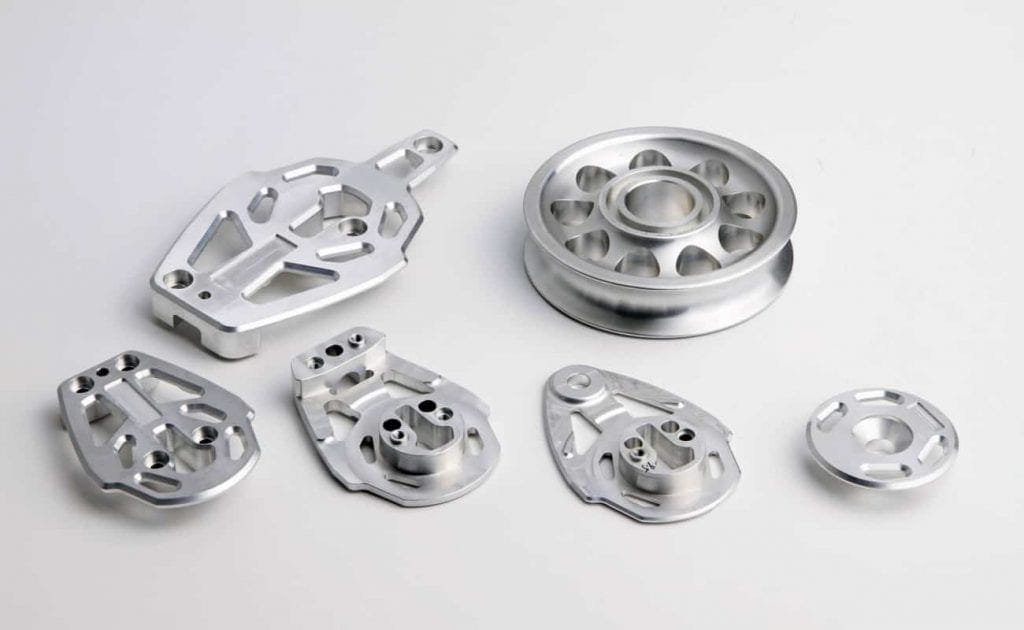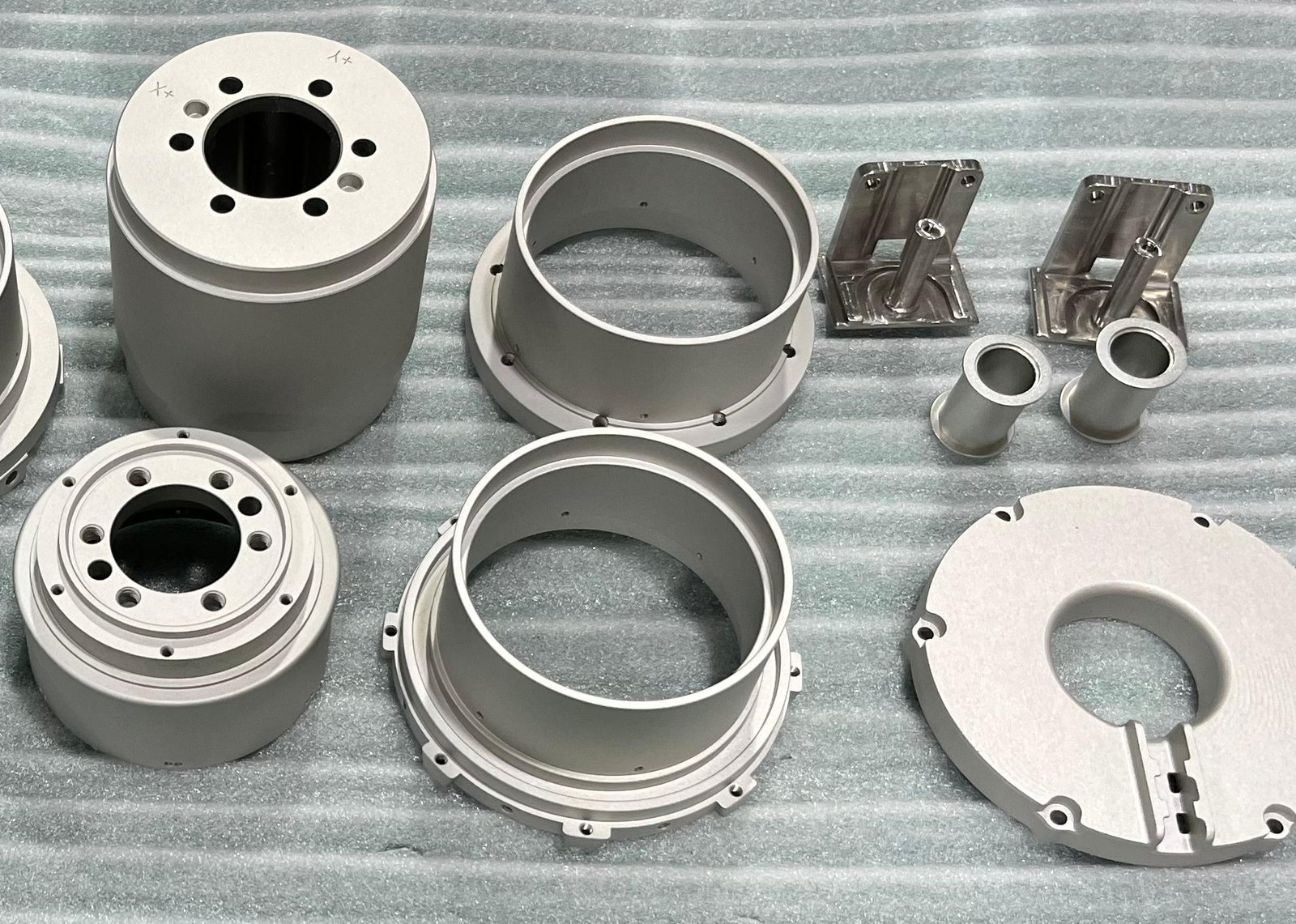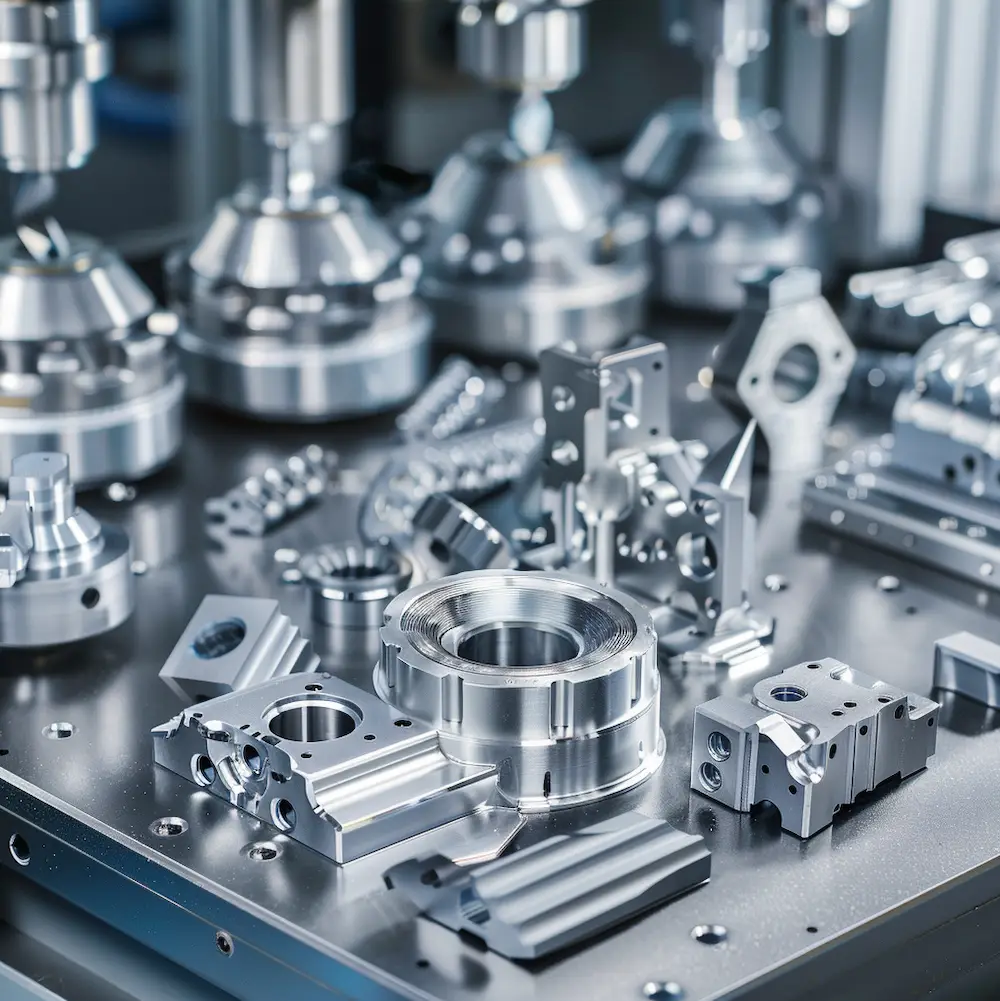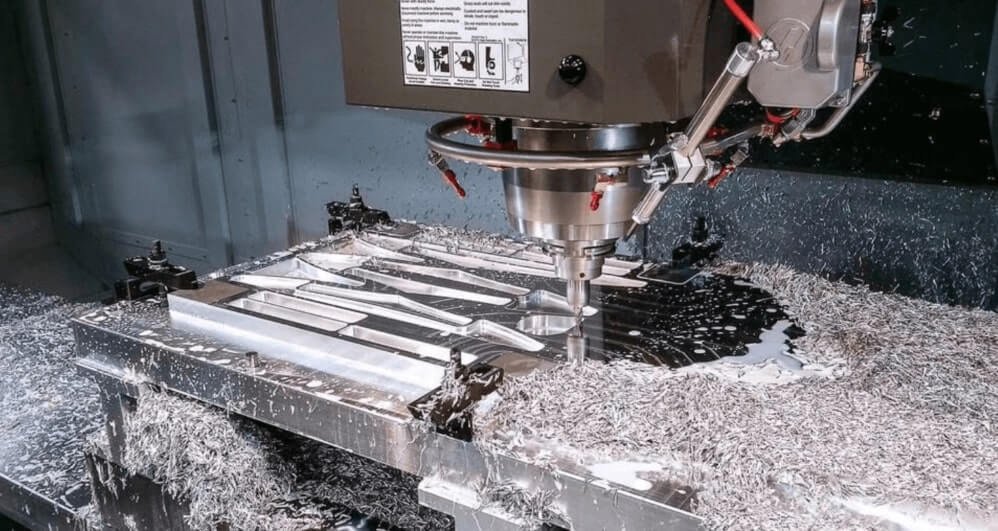CNC Milling is the cornerstone of modern manufacturing, integrating precision engineering with state-of-the-art technology to deliver exceptional results. In this article, we delve deep into the role of cutting speed in CNC Milling—a subject explored by numerous industry sources. Drawing on insights from Datron, In3Dtec, China Machining, Martin Supply, Quora discussions, RapidDirect, Reddit, and WaykenRM, we summarize key themes: the distinction between cutting speed and feed rate, their impact on tool life and surface finish, and strategies for optimizing machining parameters for various materials. Each source highlights the importance of balancing cutting speed with feed rate and depth of cut to maximize productivity and quality. Our comprehensive guide also integrates information about CNCRUSH (https://cncrush.com/), a China-based CNC machining service provider with over 12 years of experience in delivering high-quality CNC Milled parts and CNC Turned parts for industries such as automotive, machine building, and automotion. Below, we present 10 in-depth sections that explore these themes and more, along with tables and a FAQ section to further clarify this critical aspect of CNC Milling.

1. CNC Milling and Cutting Speed: A Critical Foundation for CNC Machining Service Excellence
Cutting speed in CNC Milling is one of the most crucial parameters that directly affect machining efficiency and product quality. Manufacturers across the globe invest considerable effort into optimizing cutting speed settings to enhance tool life and improve surface finish. In this section, we explore how the proper control of cutting speed forms the backbone of an effective cnc machining service. By leveraging advanced control systems and precision adjustments, operators can maintain a balance between productivity and tool wear—a balance that is essential for reducing downtime and ensuring cost efficiency.
At CNCRUSH, a premier China CNC factory, our 12-year legacy in CNC machining service is built on fine-tuning parameters such as cutting speed to deliver unmatched precision. The interplay between cutting speed, feed rate, and depth of cut means that any variation can lead to either impressive productivity gains or suboptimal results. When cutting speed is too high, tool wear increases and surface finish may deteriorate; when too low, productivity drops, and material removal rates suffer. This delicate balance is crucial not only for achieving a high-quality finish on CNC Milled parts and CNC Turned parts but also for meeting the rigorous demands of sectors like automotive, machine building, and automotion.
In today’s competitive manufacturing landscape, the expertise in setting the right cutting speed can set one provider apart. At CNCRUSH, our engineers continuously analyze machining data to ensure that our processes are optimized for both efficiency and quality, ultimately reinforcing our reputation as CNC machining experts committed to providing high-precision, custom CNC solutions.
2. How CNC Milling Enhances CNC Milled Parts Quality Through Optimal Cutting Speed
One of the most significant benefits of adjusting cutting speed in CNC Milling is its direct influence on the quality of CNC Milled parts. When the cutting speed is properly optimized, it minimizes issues such as chatter, tool deflection, and thermal damage, ensuring that the machined surface is smooth and meets stringent quality standards. This section delves into how precise adjustments can lead to an excellent surface finish and dimensional accuracy, which are vital for parts used in high-performance applications.
Manufacturers face the challenge of machining a variety of materials—from soft aluminum to hard steel—and each requires a different cutting speed to achieve optimal results. For instance, higher speeds are generally favorable for softer materials to improve chip removal, while harder materials demand lower speeds to reduce tool wear. Through meticulous calibration, CNC Milling ensures that every CNC Milled part maintains consistent quality, whether it’s used in automotive components, machine building, or automotion projects.
At CNCRUSH, our state-of-the-art facilities and experienced technicians focus on achieving the best possible outcomes. By constantly monitoring and adjusting cutting speeds based on material properties and machining conditions, we ensure that every product leaving our China CNC factory adheres to strict quality standards. This commitment not only enhances the durability and performance of CNC Milled parts but also cements our position as leaders in precision CNC machining services.
3. CNC Milling Insights: The Impact of Cutting Speed on CNC Turned Parts and CNC Milled Parts Performance

The performance of both CNC Turned parts and CNC Milled parts is intricately linked to the parameters set during the machining process, with cutting speed playing a pivotal role. In this discussion, we analyze how cutting speed affects tool life, surface integrity, and overall part performance. Faster cutting speeds, when balanced with appropriate feed rates, can improve material removal rates without compromising the final part quality. However, exceeding optimal speeds can result in premature tool failure and inferior finishes.
By understanding these dynamics, manufacturers can tailor their processes to suit specific applications. For instance, components in high-speed automotive applications require not only high precision but also resilience against high stress; hence, the cutting speed must be calibrated meticulously to avoid micro-cracks and other surface imperfections. This dual focus on performance and durability is a hallmark of high-quality CNC Milling processes.
At CNCRUSH, we combine robust machining strategies with advanced technology to ensure that both CNC Turned parts and CNC Milled parts meet the demanding standards of various industries. Our in-depth understanding of cutting dynamics helps us deliver parts that not only meet dimensional tolerances but also exhibit superior mechanical properties. This integrated approach is what sets us apart as a leading cnc machining service provider in China, offering custom CNC solutions that are engineered for excellence.
4. Advanced CNC Milling Strategies for Superior CNC Machining Service Results
The evolution of CNC Milling technology has led to the development of advanced strategies that enable manufacturers to push the boundaries of productivity and quality. In this section, we examine state-of-the-art techniques that include real-time monitoring, adaptive control systems, and simulation-based parameter optimization. These strategies are critical for any modern cnc machining service aiming to stay competitive in today’s fast-paced manufacturing environment.
One innovative approach involves the use of sensor-driven feedback systems that continuously monitor cutting conditions. These systems adjust cutting speed on the fly to maintain optimal performance, thereby reducing tool wear and enhancing surface quality. Simulation tools also play a vital role in predicting the effects of various machining parameters, enabling manufacturers to identify the ideal settings for each material and part geometry. Such technological advancements have redefined the possibilities in CNC Milling, making it possible to achieve both high-speed production and exceptional quality.
CNCRUSH is at the forefront of these technological innovations. Our investment in advanced CNC machining services allows us to offer custom CNC solutions that are tailored to each client’s specific needs. With over 12 years of experience, our expertise in optimizing cutting speed and other critical parameters ensures that every product, whether a CNC Milled part or a CNC Turned part, is manufactured with the utmost precision. These strategies have been instrumental in our success in the automotive, machine building, and automotion sectors.
5. Cutting Speed Optimization in CNC Milling for High-Quality CNC Milled Parts Production

Optimizing cutting speed is not just about setting a numerical value—it involves a deep understanding of material properties, tool dynamics, and machine capabilities. In CNC Milling, selecting the right cutting speed is fundamental for producing high-quality CNC Milled parts. This section presents a detailed analysis of the factors influencing cutting speed optimization, including material hardness, tool geometry, and coolant application.
For example, aluminum, with its lower hardness, can be machined at higher speeds, whereas tougher materials like steel require slower speeds to prevent excessive heat buildup and tool degradation. The key is to strike the perfect balance between cutting speed and feed rate, ensuring that the cutting tool removes material efficiently without generating damaging heat. In addition, the use of cutting fluids can help control temperature, thereby preserving tool life and part integrity.
Below is a table summarizing recommended cutting speeds for various materials in CNC Milling:
| Material | Recommended Cutting Speed (m/min) | Notes |
|---|---|---|
| Aluminum | 250 – 500 | High speed possible due to low hardness |
| Steel | 30 – 60 | Lower speed required to prevent excessive heat |
| Brass | 100 – 200 | Moderate speed for optimal surface finish |
| Plastics | 100 – 200 | Dependent on plastic type; controlled for quality |
| Titanium | 20 – 40 | Extremely low speeds to avoid tool damage |
At CNCRUSH, our deep technical expertise allows us to fine-tune these parameters based on real-world machining trials and simulation data. This commitment to precision not only results in top-quality CNC Milled parts but also reinforces our status as a trusted cnc machining service provider in China.
6. The Role of Cutting Speed in Enhancing CNC Turned Parts in CNC Machining Service
While much of the discussion around cutting speed often centers on milling operations, its impact on turning processes is equally significant. In CNC Milling, cutting speed is a critical factor that influences the finish and performance of CNC Turned parts. This section explores how adjusting cutting speed can improve the surface integrity and mechanical properties of turned components, ensuring they meet the stringent demands of various industrial applications.
In turning, as with milling, the cutting speed must be carefully balanced with feed rate and depth of cut to avoid detrimental effects such as chatter or excessive heat. The proper cutting speed helps in achieving a fine surface finish and reduces the likelihood of thermal distortions, which is particularly important for precision components used in automotive and machine building applications. Manufacturers who master these variables can ensure that their CNC Turned parts not only perform well but also have an extended service life.
CNCRUSH’s 12-year legacy in CNC machining services is built upon a deep understanding of these interrelationships. Our advanced production lines are equipped to optimize cutting speeds for both milling and turning operations, ensuring that every part, whether a CNC Milled part or a CNC Turned part, meets our rigorous quality standards. This holistic approach is essential for delivering superior performance in high-stress applications, reinforcing our commitment to excellence in every project we undertake.
7. Balancing Feed Rate and Cutting Speed: CNC Milling Best Practices for CNC Milled Parts and CNC Turned Parts
Achieving optimal performance in CNC Milling is largely a matter of balancing cutting speed with feed rate and depth of cut. In this section, we discuss best practices for striking that balance—a topic that is crucial for both CNC Milled parts and CNC Turned parts production. An effective balance ensures maximum material removal rates without compromising the integrity or surface finish of the part.
The feed rate, defined as the distance the tool advances for each revolution of the spindle, works in tandem with cutting speed to determine the chip load. If the feed rate is too high relative to the cutting speed, the tool can experience undue stress, leading to premature wear and poor surface quality. Conversely, too low a feed rate can result in excessive heat generation and inefficient machining. By using advanced simulation tools and empirical data, manufacturers can establish an optimal balance that maximizes efficiency and quality.
CNCRUSH, a leader in cnc machining service, leverages a wealth of experience and cutting-edge technology to fine-tune these parameters. Our engineers continuously monitor machining operations to adjust both cutting speed and feed rate in real-time, ensuring that every component—whether a CNC Milled part or a CNC Turned part—is produced with utmost precision. This balanced approach is particularly critical in industries such as automotive and machine building, where even minor deviations can lead to significant performance issues.
Below is a table comparing key factors between cutting speed and feed rate in CNC Milling:
| Parameter | Effect on Machining | Optimal Value | Comments |
|---|---|---|---|
| Cutting Speed | Influences chip formation and tool wear | Material dependent (e.g., 250 m/min for aluminum) | Must be balanced with feed rate to avoid overheating |
| Feed Rate | Determines chip load and surface finish | Calculated based on material and tool geometry | Critical for achieving desired finish and efficiency |
| Depth of Cut | Affects material removal rate and tool load | Optimized per machining operation | Must be controlled to prevent excessive tool stress |
This systematic approach to balancing parameters ensures that our cnc machining service not only meets but exceeds industry standards, solidifying our reputation as CNC machining experts in China.
8. Precision CNC Milling: Elevating CNC Turned Parts and CNC Machining Service Standards

Precision is the hallmark of advanced CNC Milling. When it comes to producing both CNC Turned parts and CNC Milled parts, every parameter—from cutting speed to tool geometry—plays an integral role in achieving the desired outcome. This section discusses how precision CNC Milling practices can elevate the overall quality and reliability of machined parts, thereby setting new standards in cnc machining service.
Precision CNC Milling is particularly essential in applications where components are subject to high stress, such as in automotive, machine building, and automotion industries. In these sectors, even minor deviations can lead to significant performance issues or premature failure of parts. To prevent such issues, manufacturers rely on precise control of cutting parameters, including cutting speed, to ensure that each cut is exact and repeatable. Advanced software and real-time monitoring systems allow for the continuous adjustment of these parameters, ensuring a consistently high-quality output.
At CNCRUSH, our commitment to precision is evident in every aspect of our operations. With over 12 years of experience, we have mastered the art of fine-tuning our CNC Milling processes to produce both CNC Turned parts and CNC Milled parts that meet the highest standards of quality. Our dedication to precision CNC machining has not only boosted our production efficiency but also earned us a reputation as a trusted partner for high-quality, custom CNC solutions. This relentless pursuit of perfection is what drives our success and continues to set us apart in the competitive landscape of CNC machining in China.
9. CNC Milling Techniques: Maximizing Efficiency in CNC Milled Parts and CNC Turned Parts Production
Maximizing efficiency in manufacturing is the ultimate goal for any cnc machining service provider. In this section, we explore various CNC Milling techniques that enhance productivity without compromising quality. By optimizing cutting speed and other machining parameters, manufacturers can achieve significant improvements in cycle times, cost-effectiveness, and overall part quality.
One effective technique is the use of high-speed machining, which leverages increased cutting speeds and reduced feed rates to maintain chip control and minimize tool wear. This method is particularly beneficial when producing complex geometries in CNC Milled parts and CNC Turned parts. Additionally, advanced toolpath strategies—such as trochoidal milling—allow for continuous cutting with reduced mechanical load, thereby extending tool life and maintaining consistent quality across large production runs.
At CNCRUSH, we implement these advanced techniques in our production processes to maximize efficiency and deliver superior results. Our ability to seamlessly integrate optimized cutting speeds with innovative CNC Milling methods positions us as a leading cnc machining service provider. Whether you require high-quality CNC Milled parts or precision CNC Turned parts for the automotive, machine building, or automotion sectors, our commitment to efficiency and innovation ensures that your production goals are met with excellence.
10. CNC Milling: Future Trends in Cutting Speed for Next-Generation CNC Machining Service Solutions
Looking ahead, the evolution of CNC Milling is set to be driven by technological advancements that will further refine the role of cutting speed in machining. In this final section, we explore future trends and innovations that promise to redefine how cutting speed is managed and optimized. Emerging technologies such as artificial intelligence, machine learning, and advanced sensor systems are paving the way for smarter, more adaptive machining processes.
Future developments will likely see an increased reliance on data-driven insights to dynamically adjust cutting speeds in real time, further enhancing the efficiency of cnc machining service operations. With predictive maintenance and continuous monitoring becoming standard practice, manufacturers will be able to proactively address tool wear and optimize cutting parameters before issues arise. These advancements are particularly significant for industries that rely on high-volume production of CNC Milled parts and CNC Turned parts, where even minor improvements in cutting speed can translate into substantial productivity gains and cost savings.
CNCRUSH is committed to staying at the forefront of these innovations. Our investment in cutting-edge technology and continuous process improvement ensures that we remain a leader in the CNC machining industry in China. By embracing future trends in CNC Milling, we are well-positioned to deliver next-generation CNC machining service solutions that meet the evolving needs of our clients in the automotive, machine building, and automotion sectors.
FAQ Section
Q1: What is CNC Milling and why is cutting speed important?
A: CNC Milling is a process where computer-controlled machines remove material from a workpiece using rotating cutting tools. Cutting speed is crucial as it affects chip formation, tool wear, and surface finish. An optimal cutting speed ensures efficient material removal and high-quality parts.
Q2: How does cutting speed impact CNC Milled parts and CNC Turned parts?
A: Proper cutting speed optimizes the balance between productivity and tool life. It enhances surface finish and dimensional accuracy for both CNC Milled parts and CNC Turned parts by reducing heat generation and minimizing tool wear.
Q3: What factors should be considered when setting the cutting speed?
A: Key factors include the type of material, tool geometry, feed rate, and depth of cut. Additionally, using cutting fluids and real-time monitoring systems can further optimize cutting conditions.
Q4: How does CNCRUSH ensure high-quality results in CNC Milling?
A: With over 12 years of experience, CNCRUSH utilizes advanced machining techniques, continuous process monitoring, and expert adjustments to cutting parameters, ensuring that every part—be it a CNC Milled part or a CNC Turned part—is manufactured to the highest quality standards.
Q5: Can optimizing cutting speed reduce production costs?
A: Yes, optimizing cutting speed not only improves surface finish and tool life but also increases material removal rates, leading to shorter cycle times and reduced overall production costs.
Conclusion
In conclusion, CNC Milling is a dynamic process where cutting speed plays a pivotal role in determining both the efficiency and quality of the final product. Throughout this article, we have explored 10 in-depth topics—from the foundational impact of cutting speed on cnc machining service to future trends that promise even more refined processes. We discussed how optimal cutting speed enhances both CNC Milled parts and CNC Turned parts, and provided valuable insights into balancing feed rate, tool dynamics, and material properties.
Our detailed analysis has also highlighted the importance of leveraging advanced technologies and simulation tools to achieve precise control over cutting speed. As the industry evolves, embracing these innovations will be critical for manufacturers who seek to remain competitive in sectors such as automotive, machine building, and automotion.
At CNCRUSH, we pride ourselves on our 12-year legacy of excellence in CNC machining services. With state-of-the-art facilities and a relentless commitment to precision, we offer custom CNC solutions that deliver high-quality CNC Milled parts and CNC Turned parts at competitive prices. Our comprehensive approach, which integrates advanced CNC Milling techniques and rigorous process optimization, ensures that our clients receive only the best from our China CNC factory.
Whether you are looking for precision CNC machining for metal or plastic parts, need CNC prototype machining, or require a reliable partner for mass production, CNCRUSH is here to meet your needs. We invite you to explore our website at https://cncrush.com/ to learn more about our services, view our portfolio, and discover how our expertise can help you achieve unparalleled production efficiency.
By understanding and mastering the role of cutting speed in CNC Milling, manufacturers can unlock new levels of productivity and quality, ensuring that every part meets the exacting standards demanded by today’s competitive market. Embrace the power of optimized cutting speed and let CNCRUSH be your partner in revolutionizing your manufacturing process.
